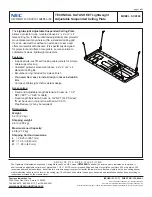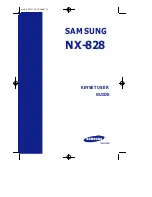
TK 61555-2-MM-EN
99
N
NO
OT
TIIC
CE
E
E
Eq
qu
uiip
pm
me
en
ntt D
Da
am
ma
ag
ge
e!!
U
Usse
e a
a h
he
ea
att ssiin
nkk,, P
P//N
N 2
20
04
4--5
58
84
4,, o
orr w
wrra
ap
p tth
he
e v
viib
brra
asso
orrb
be
err w
wiitth
h w
we
ett rra
ag
gss tto
o p
prre
ev
ve
en
ntt d
da
am
ma
ag
giin
ng
g
tth
he
e v
viib
brra
asso
orrb
be
err..
2.
Solder the vibrasorber connections.
3.
Pressurize the system and test for leaks. If no leaks are found, evacuate the system.
4.
Charge the unit with the proper refrigerant and check the compressor oil level.
In-Line Condenser Check Valve
This unit uses an in-line condenser check valve. The in-line check valve is not repairable and
must be replaced if it fails. A heat sink must be used on the in-line check valve when it is being
soldered in place to prevent damage to the neoprene seal.
Figure 79.
Cross Section of In-line Condenser Check Valve
1.
Valve
3.
Valve Seat
2.
Neoprene Seal
4.
Spring
Condenser Check Valve Replacement
Removal
1.
Recover the refrigerant charge.
2.
Place a heat sink on the check valve.
3.
Unsolder the lines and remove the check valve.
Installation
N
No
otte
e:: A heat sink must be used on the in-line check valve when it is being soldered in place to
prevent damage to the neoprene seal.
1.
Clean the tubes for soldering.
2.
Place the check valve in position. The arrow on the valve body indicates the direction of
refrigerant flow through the valve.
3.
Place a heat sink on the check valve.
4.
Solder the inlet and outlet connections.
5.
Pressurize the refrigeration system and test for leaks.
6.
If no leaks are found, evacuate the system.
7.
Recharge the unit with proper refrigerant and check the compressor oil.















































